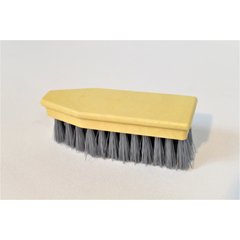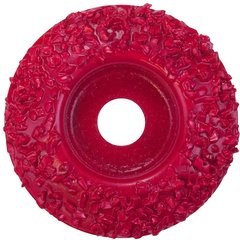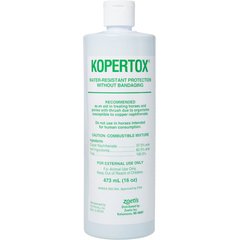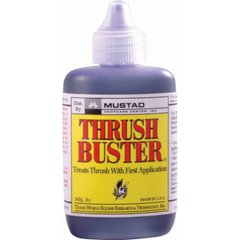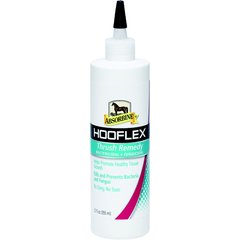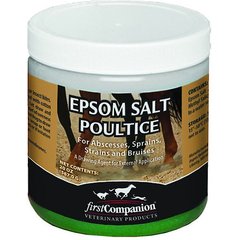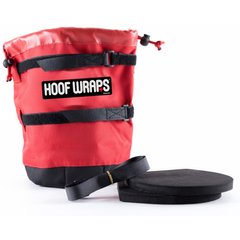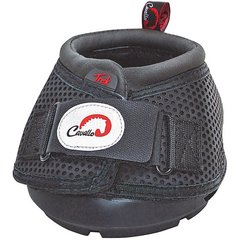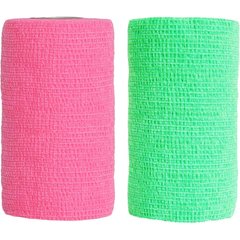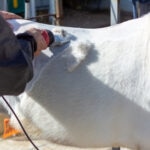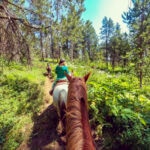Horse Hoof Care: Essential Products for Every Horse Owner
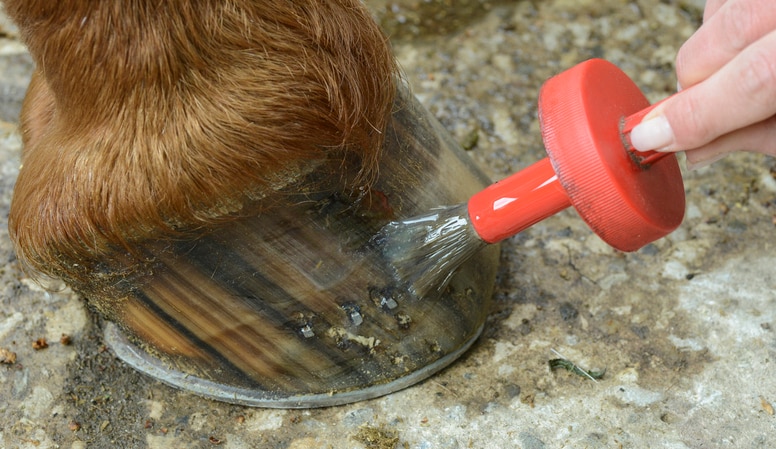
Photo by wakila/E+ via Getty Images
“No hoof, no horse” might be a cliché, but without proper horse hoof care your horse’s health and performance will suffer.
Here we explain why horse hoof care is essential, what good hoof care practices look like, and potential issues to watch for.
Why Horse Hoof Care Is Important
The horse’s hoof is like a good pair of human running shoes—it absorbs the natural shock that occurs with every step. A healthy hoof helps limit stress on the horse’s legs and joints so they can move freely and without pain.
The first step to providing proper horse hoof care is to establish a relationship with a trusted farrier. Every horse is unique, so your horse’s age, workload, conformation, and health conditions will determine how frequently they need farrier care.
How Often Do Horses Need Hoof Care?
Ideally, you should clean your horse’s hooves daily to remove any dirt buildup, snowballs in the winter, or stones that may be stuck. However, if you board your horse, you might not be able to see your horse that often.
If more than a few days pass between visiting your horse, consider adding hoof picking to your board bill, or find a barn mate who you can share hoof cleaning duties with. If you visit on different days, you can offer to clean their horse’s feet too.
In addition to regular hoof picking, horses need routine farrier visits so your horse’s feet can be shod, shoes can be replaced, and any issues with the hooves can be addressed. Generally, farrier visits should occur every six to eight weeks, but timing can vary based on your horse’s needs.
Keeping a clean barn or stable is also important to maintaining healthy hooves. For stalled horses, that means cleaning stalls daily to remove any manure or soggy, urine-soaked bedding that can cause problems for your horse’s hooves.
Standing in muddy pastures for long periods can also be problematic. Improving drainage and dragging pastures to spread manure are best practices for providing hoof-healthy paddocks.
How Much Time Should I Spend on Hoof Care?
Daily hoof picking doesn’t take much time. If your horse willingly picks up their feet, it might take five minutes or less. Use this time to check for any abnormalities like cracks or soreness. If your horse wears shoes, check to make sure they aren’t loose.
Horse Hoof Care Products Every Owner Needs
Taking care of your horse’s hooves is essential to their overall health. To provide the best hoof care, you’ll need the right supplies for daily use and to deal with issues that might arise.
Horse Hoof Care Must-Haves
- Hoof pick for daily cleaning
- Hoof brush if it is not part of your hoof pick to clear away loose dirt
Recommended Products
Horse Hoof Care Nice-To-Haves
- Rasp to file a big crack or chip to avoid more breakage until your farrier can address it
- Crease nail puller to remove a loose shoe (a loose shoe can twist and damage the hoof; if it rotates and the horse steps on the nails, there is the risk of puncture wounds)
- Bandage scissors to cut gauze pads, hood bandages, or duct tape if you have to wrap the hoof
Recommended Product
Hoof Care First Aid Kit
In any good first aid kit, it’s important to have specific horse hoof care products on hand for more than daily care. These include:
Thrush Treatments
Thrush treatments such as Kopertox Water-Resistant Horse Thrush Treatment, Delta Mustad Thrush Buster, and Absorbine Hooflex Thrush Remedy are used to kill the bacteria that cause thrush infection.
Recommended Products
Epsom Salts or Epsom Salt Gels
Epsom salts and Epsom salt gels are used to help speed draining of horse hoof abscesses.
Recommended Product
Hoof Conditioner
Hoof conditioner strengthens hooves and helps prevent cracks and splits.
Recommended Product
Hoof Soaking Boot or Bucket
Hoof soaking boots and buckets make it easier to soak hooves when treating abscesses or white line disease.
Recommended Product
Hoof Boots
Hoof boots are used if your horse needs temporary traction, support, or protection.
Recommended Product
Gauze Pads or Baby Diapers
Gauze pads or baby diapers are used to protect an open wound on the bottom of the hoof or to keep packing materials in place, as instructed by a farrier or veterinarian.
Recommended Product
Bandages
A self-adhesive flexible bandage is used to cover gauze and packing materials after a hoof treatment.
Duct Tape
Duct tape is used to secure a hoof wrapping.
Common Horse Hoof Care Problems
Even with the best care, horses can develop hoof problems. Rapidly changing weather conditions can be hard on a horse’s hooves, and a horse’s conformation (the way their body is naturally built) may predispose them to certain hoof problems.
Common issues that horse owners are likely to encounter include:
- Thrush: When fungus invades the hoof, it can create an infection called thrush. Thrush often results from standing in dirty stalls and paddocks for long periods. However, extremely wet and frequently changing weather conditions can cause thrush even in barns and stables that follow hoof care best practices.
- Hoof abscess: An abscess is linked to bacteria. When bacteria invade a crack or wound, it produces a blood blister-like infection. Relief is almost immediate after a veterinarian or farrier opens the spot, allowing pus to drain. Like thrush, a horse may experience an abscess even when receiving the best care.
- Hoof cracks: Cracks are divided into three categories: vertical, quarter, and horizontal. Extreme moisture changes, poor nutrition, conformation, and injuries can create hoof cracks.
Other more serious problems of the hoof include:
- Navicular: Navicular is a decay of the navicular bone, a key structure in the hoof. The disease is a common cause of lameness in the front feet.
- Laminitis/Founder: This is when damage occurs to the sensitive tissue called laminae that connects the hoof wall and coffin bone.
- White line disease: Also called seedy toe, this condition is poorly understood, but it begins as a hoof wall separation.
The Bottom Line for Horse Hoof Maintenance
Daily cleaning and a solid relationship with a farrier are essential components of a hoof care routine.
Good nutrition also plays a role in maintaining hoof health. Work with your veterinarian or an equine nutritionist to determine if your horse is getting all the nutrients they need from their diet or if they need supplements to support hoof health.
This content was medically reviewed by Kaela Schraer, DVM.

